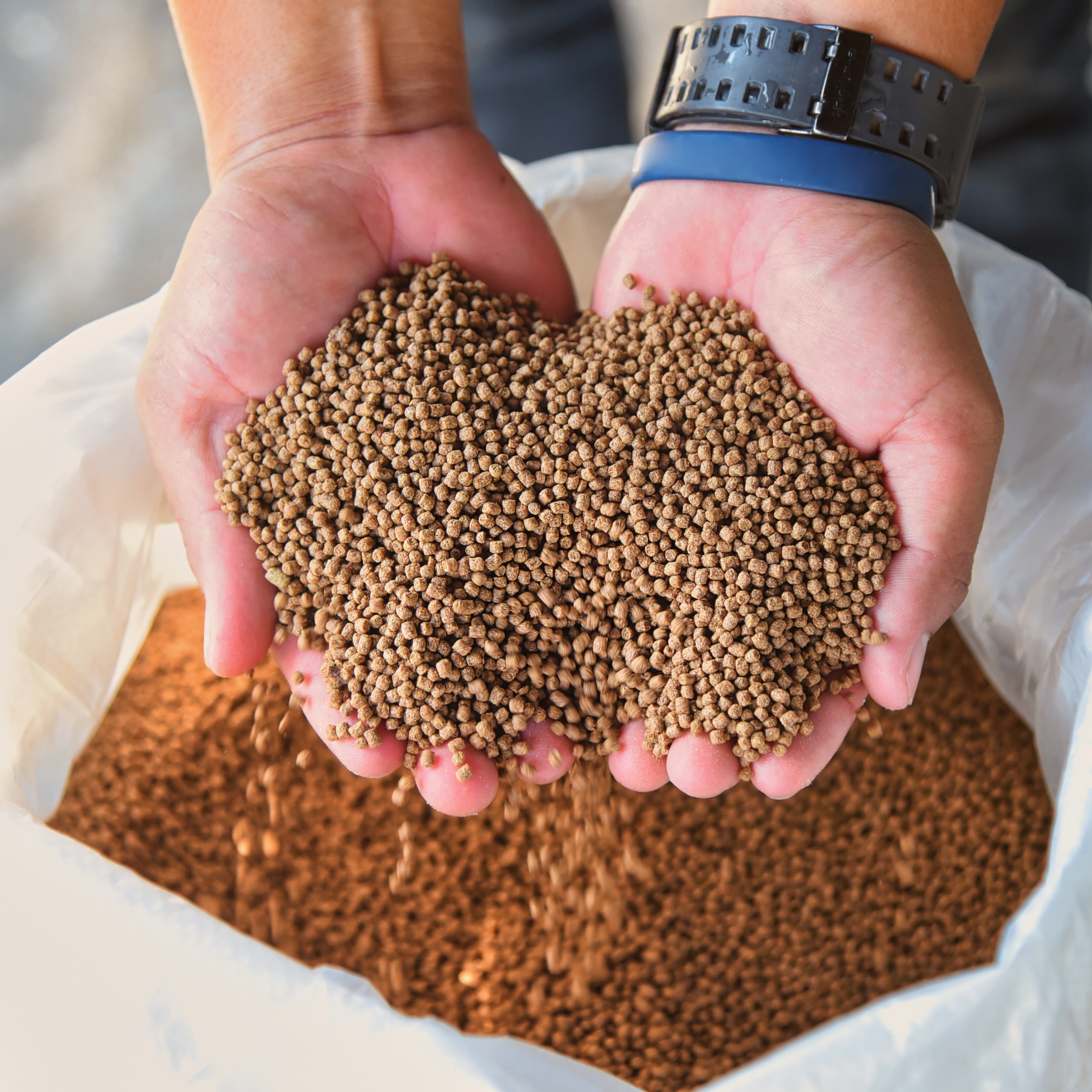What is really in your shrimp feed and how does it affect your farm?
Throughout the shrimp production cycle, different feed types are required to meet the nutritional needs of each life stage. In the early larval stages, shrimp rely on live feeds that are easy to digest and rich in nutrients. As they transition into the post-larval and grow-out phases, formulated shrimp feeds become the primary dietary source, providing consistent and balanced nutrition to support daily growth and development.
For broodstock, high-performance maturation diets that meet specific nutritional requirements are crucial for successful reproduction. While fresh feeds such as clam, squid, polychaete worms, and Artemia can enhance reproductive performance, they pose risks including disease transmission, inconsistent nutritional value, limited availability, and potential deterioration of water quality in hatchery systems.
Given that formulated shrimp feed can account for up to 50% of total production costs, selecting the right feed type and pellet size is essential. One major advantage of dry formulated feed is its ease of handling and resistance to mechanical stress. A deeper understanding of shrimp feed formulation and its impact on both shrimp health and farm economics is vital for farmers aiming to optimize performance and profitability.
Formulated Shrimp Feed Processing
Commercial aquafeeds are typically produced by either extrusion or pelleting:
To produce small particle sizes for early-stage shrimp, methods like crushing, agglomeration, or crumbling are used, followed by screening for uniformity.
Key Feed Additives in Shrimp Nutrition
1. Palatability Enhancers & Feeding Stimulants
Marine-based ingredients (e.g., fish meal, krill meal, shrimp meal) are naturally palatable to shrimp. However, due to rising costs, many feeds now include plant-based alternatives, which often reduce feed acceptance. As a solution, feed stimulants and attractants such as L-carnitine are added to improve feed intake and growth performance.
2. Antioxidants
High levels of PUFAs (polyunsaturated fatty acids) in marine ingredients are prone to oxidation, leading to reduced shelf life and feed quality. Common synthetic antioxidants include ethoxyquin, BHA, BHT, and PG. Natural alternatives like vitamin E and C are gaining popularity for their safety and health benefits.
3. Pigment & Coloring Agents
Astaxanthin, the primary pigment used in shrimp feed, enhances coloration in cultured shrimp to match wild counterparts. Available in both synthetic and natural forms, it supports both market appeal and antioxidant function. Natural sources include krill oil, Phaffia yeast, and crawfish oil.
4. Antimicrobial Agents
To prevent microbial growth in nutrient-rich feeds, organic acids and their salts are commonly used. These inhibit mold and bacteria while maintaining nutritional quality. Examples include benzoic acid, propionic acid, and sorbic acid.
5. Organic Acids
Short-chain fatty acids like formic, citric, benzoic, and acetic acids are used to enhance feed preservation and gut health in shrimp. These acids improve digestion and nutrient absorption by disrupting harmful bacteria in the shrimp’s digestive system.
6. Immunostimulants
Natural immune-boosting compounds, such as β-glucan, support shrimp immune response by activating macrophages and enhancing resistance to pathogens. Herbal extracts rich in polyphenols, alkaloids, and terpenoids are also used as natural antibiotic alternatives. However, many plant-based feeds contain antinutritional factors like phytic acid, which can reduce mineral absorption. To solve this, phytase enzymes are added to improve bioavailability.
Conclusion
As the shrimp farming industry evolves, the use of high-quality feed additives has become essential to improve animal health, reduce disease risks, and enhance overall farm performance. From boosting immunity to improving feed efficiency and water quality, the right additives can make a measurable impact on both sustainability and profitability.



